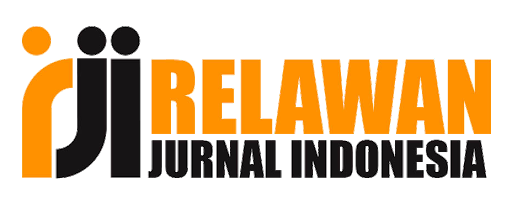KAJIAN ETNOMATEMATIKA PADA RITUAL ADAT KEMATIAN NEBO MASYARAKAT LEWOLERE
https://doi.org/10.30605/pedagogy.v10i3.6936
Keywords:
Etnomatematika, Ritual Adat Kematian, NeboAbstract
Budaya adalah tradisi yang diwariskan yang bersifat turun temurun. Ritual adat merupakan tradisi yang dimiliki oleh suatu kelompok masyarakat tertentu dan diwariskan dari generasi ke generasi. Etnomatematika dapat diartikan sebagai matematika yang dipraktikkan oleh kelompok budaya. Masyarakat sering kali tidak menyadari bahwa mereka telah menerapkan berbagai konsep matematika dalam pelaksanaan adat istiadat dan budaya mereka. Ritual adat kematian “Nebo” merupakan sebuah ritual adat dalam kebudayaan Lamaholot secara umum, namun dalam pelaksanaannya setiap daerah memiliki kekhasannya masing-masing, begitu juga dengan masyarakat Lewolere. Penelitian ini bertujuan untuk mengkaji dan mendeskripsikan aspek-aspek matematika dan aktivitas matematis yang terkandung dalam ritual adat kematian “Nebo” masyarakat Lewolere, Larantuka. Metode penelitian yang digunakan dalam penelitian ini yaitu kualitatif deskrptif dengan teknik pengumpulan data yaitu wawancara, observasi, catatan lapangan dan dokumentasi. Subyek dalam penelitian ini adalah 4 orang tokoh adat dan 3 orang masyarakat yang pernah mengikuti ritual adat kematian tersebut. Teknik analisis data dilakukan berdasarkan Miles dan Huberman yaitu reduksi data, penyajian data, verifikasi/penarikan kesimpulan. Hasil penelitian menunjukan bahwa ritual adat kematian “Nebo” masyarakat Lewolere mengandung unsur-unsur matematika seperti logika, peluang, geometri, barisan dan deret. Selain itu, aktivitas tersebut juga berkaitan dengan aktivitas fundamental matematis yaitu caunting, locating, measuring, explaining.
Downloads
References
D. C. Orey and M. Rosa, “Ethnomathematics: Teaching and Learning Mathematics from a Multicultural Perspective,” J. Math. Cult., Vols. Vol. 1, No.1, pp. 57-78, May 2006.
Danoebroto, S.W. (2020). Kaitan Antara Etnomatematika dan Matematika Sekolah: Sebuah Kajian Konseptual. IndonesianDigital Journal of Mathematics and Education, Vol. 7, No. 1 DOI: https://doi.org/10.53717/idealmathedu.v7i1.171
Dominikus, W. S. (2017). “Ethnomathematical Ideas in The Weaving Practice of Adonara Society. Journal of Mathematics and Culture, Vol. 11, No. 4
Fauzi, L. M., Gazali, M., Fauzi. A. Ethnomathematics: A mathematical exploration on the layout of tui gubuk and the architecture of Segenter Traditional House. Jurnal Math Educator Nusantara: Wahana Publikasi Karya Tulis Ilmiah Di Bidang Pendidikan Matematika. 7(2), 135-148. DOI: https://doi.org/10.29407/jmen.v7i2.16519
Gerdes,P.(1994). Reflection on Ethnomathematics. For the Learning of Mathematics, 14(2), 19-21.
Linling, Y. dan uryadi, N. 2022. Ethnomathematics in The Culture of Mountain Rice Farming of The Dayak Kanayatn Community. Ethnomathematics Journal Vol. 3 N0. 1. DOI: https://doi.org/10.21831/ej.v3i1.48725
M. W. Yusuf, I. Saidu, and A. Halliru, “Ethnomathematics (A Mathematical Game in Hausa Culture),” Int. J. Math. Sci. Educ. © Technomathematics Res. Found, 2010.
Netriwati, Irma, A., Putra, R.W. 2021. Mengupas Materi dan Soal Bangun Datar SMP. Arjasa Pratama. Bandar Lampung.
Normina. 2017. Pendidikan dalam kebudayaan. Ittihad Jurnal Kopertais Wilayah XI Kalimantan Volume 15 No.28 Oktober 2017
Patma Sopamena dan Fahruh Juhaevah. 2019. Karakteristik etnomatematika suku Nuaulu di Maluku pada simbl adat Cakalele. Barekeng Jurnal Ilmu Matematika dan Terapan 13(2): 075-084. DOI:10.30598/barekengvol13iss2pp075-084ar772 DOI: https://doi.org/10.30598/barekengvol13iss2pp075-084ar772
U. D’Ambrosio, “Ethnomathematics and Its Place in the History and Pedagogy of Mathematics,” Learn. Math., Vols. Vol. 5, No. 1, pp. 44-48, 1985.
W. S. Dominikus, “Etnomatematika Suku Adonara di Nusa Tenggara Timur,” Universitas Negeri Malang, Disertasi tidak dipublikasikan, Malang, 2017.
Wahyuni, Astri dkk. 2013. Peran Etnomatematika dalam Membangun Karkter Bangsa. Yogyakarta: Seminar Nasional Matematika dan Pendidikan Matematika FMIPA UNY.
Downloads
Published
How to Cite
Issue
Section
License
Copyright (c) 2025 Pedagogy : Jurnal Pendidikan Matematika

This work is licensed under a Creative Commons Attribution 4.0 International License.
In submitting the manuscript to the journal, the authors certify that:
- They are authorized by their co-authors to enter into these arrangements.
- The work described has not been formally published before, except in the form of an abstract or as part of a published lecture, review, thesis, or overlay journal.
- That it is not under consideration for publication elsewhere,
- That its publication has been approved by all the author(s) and by the responsible authorities – tacitly or explicitly – of the institutes where the work has been carried out.
- They secure the right to reproduce any material that has already been published or copyrighted elsewhere.
- They agree to the following license and copyright agreement.
License and Copyright Agreement
Authors who publish with this journal agree to the following terms:
- Authors retain copyright and grant the journal right of first publication with the work simultaneously licensed under Creative Commons Attribution License (CC BY 4.0) that allows others to share the work with an acknowledgment of the work's authorship and initial publication in this journal.
- Authors are able to enter into separate, additional contractual arrangements for the non-exclusive distribution of the journal's published version of the work (e.g., post it to an institutional repository or publish it in a book), with an acknowledgment of its initial publication in this journal.
- Authors are permitted and encouraged to post their work online (e.g., in institutional repositories or on their website) prior to and during the submission process, as it can lead to productive exchanges, as well as earlier and greater citation of published work.















